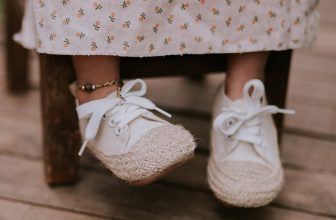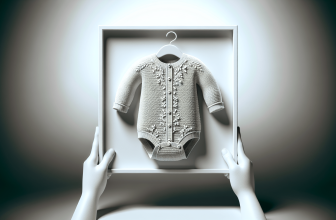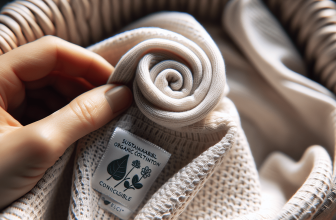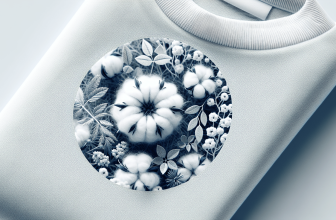Having a baby means dealing with a lot of clothing! From tiny onesies to cute little outfits, it can be overwhelming trying to keep your baby’s wardrobe organized. But fear not, because we have some fantastic tips to help you efficiently organize your little one’s wardrobe. From using dividers to sorting by size, you’ll be able to easily find and access your baby’s clothes, making those early morning diaper changes a breeze. Say goodbye to chaos and hello to a beautifully organized baby’s wardrobe!
This image is property of images.unsplash.com.
Decluttering the Wardrobe
When it comes to organizing your baby’s wardrobe, the first step is to declutter. Start by removing any clothes that are outgrown or no longer used. Babies grow quickly, so it’s important to regularly assess their clothing to ensure they have clothes that fit. Set aside these clothes to donate or sell. Not only will this free up space in the wardrobe, but it will also allow other families to benefit from the clothes your baby no longer needs. Remember, someone else’s “outgrown” may be just the right size for another little one.
To make the decluttering process even more efficient, it can be helpful to separate the clothes by size. This will make it easier to identify which clothes your baby can still wear and which ones they have already outgrown. Store the outgrown clothes separately or label them clearly so that when the time comes, you’ll be able to easily retrieve them for future use or donation.
Categorizing the Clothing
Once you have decluttered the wardrobe, it’s time to categorize the remaining clothes. Sorting clothes by type is a great way to keep everything organized and easily accessible. Consider grouping together items such as onesies, sleepers, dresses, and separates. This will make it faster and easier to find the specific items you need when dressing your baby.
In addition to sorting by type, grouping clothes by season is also beneficial. Babies have different clothing needs depending on the weather, so separating clothes by season will help you find appropriate outfits quickly. Keep the warm, cozy clothes like sweaters and fleece jackets within reach during the colder months, while lighter clothes like rompers and shorts can be stored away until summer.
It’s also helpful to arrange clothes by occasion. Separate everyday clothes from special outfits like party dresses or formal wear. This way, you won’t have to sift through dressier clothes when you’re just looking for something simple and comfortable for your baby to wear on a regular day.
Utilizing Storage Solutions
To make the most of the available space in your baby’s wardrobe, investing in the right storage solutions is key. Hangers and dividers specifically designed for baby clothes can help keep everything neat and organized. Hang baby clothes that can easily wrinkle or stretch, such as dresses, shirts, and jackets. This will not only keep them in better condition but also make them more visible and accessible.
For small items like socks, bibs, and hats, consider using drawer dividers. These dividers can help keep these items separated and easy to find. Additionally, storage bins or baskets are perfect for storing and organizing other small baby items like onesies, mittens, and booties. Having designated spaces for these items will help streamline your baby’s wardrobe and make finding what you need a breeze.
Accessories play an important role in your baby’s wardrobe too. Installing a hanging organizer specifically designed for accessories like bows, headbands, and hats will keep them tidy and prevent them from getting misplaced. Be sure to label the storage containers so that you can quickly find the specific accessories you need when styling your baby’s outfits.
Organizing within the Wardrobe
To maintain an organized wardrobe, it’s important to have a system for arranging the clothes within each category. As mentioned before, hanging dresses, shirts, and jackets will keep them wrinkle-free and easily visible. However, for items like pants, shorts, and pajamas, folding and stacking them will save space while still keeping everything organized. Fold these items neatly and stack them in separate sections or on shelves in your baby’s wardrobe.
Drawer dividers are not only useful for small items but also for socks, bibs, and hats. By using dividers, you can create compartments within drawers to keep these items separated and easy to locate. This way, you won’t have to waste time rummaging through a jumbled mess of socks or bibs when you’re in a hurry to get your baby dressed.
Designate specific areas for shoes and accessories within the wardrobe. Keep shoes in shoe organizers or on a designated shelf, making it easier to find the perfect pair to complete your baby’s outfit. Consider using hooks or small hanging organizers for accessories like belts or suspenders. By having everything in its own designated spot, you’ll always know where to find what you need when it’s time to dress your baby.
This image is property of images.unsplash.com.
Maintaining the Wardrobe
Organizing your baby’s wardrobe is not a one-time event—it’s an ongoing process. Regularly checking for clothes that need repairing is important to ensure that your baby always has clothes in good condition. Look for loose buttons, torn seams, or any other signs of wear and tear. Repair or discard these items as needed to keep your baby’s wardrobe looking its best.
Before storing clothes that your baby has outgrown or won’t be using for a while, be sure to clean and wash them. This will help keep them fresh and ready for future use. Gently wash and dry each item according to the care instructions to ensure they remain in good condition. Once clean, fold and store the clothes neatly in labeled containers, ready to be used by another baby or for your baby’s future use.
As your baby grows, their clothing needs will change. It’s important to rotate and update their wardrobe accordingly. Regularly assess their size and swap out any clothes that have become too small. This way, you can ensure that your baby always has clothes that fit well and are comfortable for them to wear. Consider creating a seasonal inventory checklist to help guide you through the process of updating your baby’s wardrobe for each season.
Organizing Baby’s Essentials
While organizing your baby’s clothing is important, don’t overlook the need to organize other essentials as well. Designating a separate area for diapers and wipes can make changing your baby’s diaper a breeze. Store these items together in a convenient location, such as a nearby shelf or drawer, so that you can easily grab what you need when changing diapers.
Storage bins are excellent for organizing creams, lotions, and powders. Keep these items together and separate them by type to make it easier to find what you need quickly. Consider investing in clear or labeled bins to easily identify the contents. This will help prevent any last-minute frantic searching for diaper cream when your baby needs a change.
Baby blankets and swaddles can quickly accumulate and become a tangled mess if not properly organized. Keep these items folded or rolled and stored in a designated area. This can be a shelf or a basket, depending on the available space in your baby’s nursery. By keeping them organized, you’ll be able to grab the perfect blanket or swaddle to keep your baby cozy and comfortable.
Toys and books are essential for your baby’s development and entertainment. However, if not organized properly, they can quickly clutter up a space and create chaos. Keep these items in accessible but tidy locations, such as a toy bin or bookshelf. Consider installing wall-mounted organizers to free up floor space and keep toys within reach. Encourage your baby to help with the clean-up process by involving them in tidying up their toys after playtime.
This image is property of images.unsplash.com.
Labeling and Tagging
Labeling and tagging your baby’s clothes and storage containers is a simple yet effective way to maintain an organized wardrobe. Labeling clothing sizes is especially helpful, as it allows you to quickly identify the size of each garment without having to unfold or inspect it. Use adhesive labels or permanent markers to clearly mark the size on the clothing tags or directly on the fabric.
Color-coded tags or stickers can also be used to categorize different types of clothes within the wardrobe. For example, you could use blue tags for sleepwear, pink tags for dresses, and green tags for everyday separates. This visual distinction will make it easier to quickly locate the specific type of clothing you need for your baby.
Identifying clothes with special care instructions is important to ensure they remain in good condition. If certain items require delicate washing or specific drying methods, attach a small tag or pin with care instructions to the garment. This will remind you to handle those items with extra care and prevent any accidental damage.
Labeling storage containers is another crucial step to maintain an organized wardrobe. Clearly label each container with the contents inside, whether it’s outgrown clothes, accessories, or blankets. This will save you time when searching for specific items, as you’ll be able to quickly identify what’s inside each container without having to open them up and rummage through.
Creating a System
Establishing a system is key to maintaining an organized wardrobe for your baby. First and foremost, establish a consistent laundry routine. Keep dirty clothes separate from clean ones and make it a habit to wash and fold clothes regularly. This will prevent mountains of laundry from piling up and making it difficult to find the clothes your baby needs.
Implementing a clothing return system is also beneficial. As your baby outgrows clothes, instead of storing them away immediately, create a designated spot in the wardrobe for recently outgrown clothes. This gives you the opportunity to double-check sizing and make any necessary adjustments to the wardrobe. Once you’re certain the clothes are no longer needed, pack them away for donation or storage.
Assign specific days for wardrobe maintenance. This could include tasks such as decluttering, organizing, or updating the inventory checklist. By dedicating specific time each week or month for these tasks, you’ll be able to stay on top of your baby’s wardrobe organization without feeling overwhelmed. Consistency is key in maintaining an organized space for your baby.
Lastly, involve family members in the organization process. Whether it’s your partner, older children, or other caregivers, assign everyone a role in maintaining the baby’s wardrobe. This could include folding and storing freshly laundered clothes, organizing toys, or helping with decluttering. By getting everyone involved, you’ll create a sense of shared responsibility and make the process more enjoyable.
Adapting as Your Baby Grows
As your baby grows, their clothing needs will change, and so should your organization system. Adjust the wardrobe storage to accommodate new sizes as needed. This may involve rearranging shelves, adding dividers, or allocating additional hanging space. Stay flexible and be willing to adapt the storage solution to meet your baby’s ever-changing needs.
Reassess your baby’s clothing needs as seasons change. Put away clothes that are no longer appropriate for the current season and bring out the ones that are. This will not only keep your baby comfortable but also prevent unnecessary clutter in the wardrobe. Consider storing off-season clothes in labeled containers or vacuum-sealed bags to save space and keep them in good condition.
When organizing toys, take into account your baby’s developmental stages. As they grow, their interests and abilities will change. Regularly rotate and update the toys available to them to keep them engaged and stimulated. Keep age-appropriate toys within reach and store the rest in a designated area until they are suitable for your baby’s stage of development.
Update your organization system accordingly as your baby grows. What worked well for a newborn may not be as practical for an active toddler. Stay attuned to your baby’s changing needs and make adjustments to the storage solutions and organization methods as necessary. Adapting the system will keep your baby’s wardrobe efficient and functional.
Maximizing Closet Space
Maximizing closet space is essential when organizing your baby’s wardrobe. Utilize vertical space by installing hanging organizers. These can be used to store items like pants, leggings, or even cloth diapers. Hanging organizers with multiple compartments can provide additional storage options for small baby items like socks or gloves.
If your baby’s wardrobe has some open wall space, install additional shelves or cubbies to create more storage options. This can be particularly useful for storing folded clothes, shoes, or bins of accessories. Make use of every available inch to optimize the organization and storage potential within the closet.
Over-the-door organizers are a fantastic way to make use of otherwise unused space. Attach one to the inside of the closet door to store small items like hair accessories, socks, or even shoes. This maximizes the available storage area while keeping these items easily accessible.
Don’t forget to optimize under-bed storage as well. Use under-bed storage containers to store off-season clothes, extra blankets, or even additional diapers. This is a great way to make use of space that is often overlooked. Ensure the containers are labeled for quick retrieval when needed.
Organizing your baby’s wardrobe efficiently is not only practical but also essential for maintaining a stress-free and functional space. By following these tips and implementing an organized system, you can ensure that dressing your baby becomes a hassle-free and enjoyable experience. So roll up your sleeves, get creative with storage solutions, and transform your baby’s wardrobe into a well-organized and efficient space. Your baby—and your sanity—will thank you!











